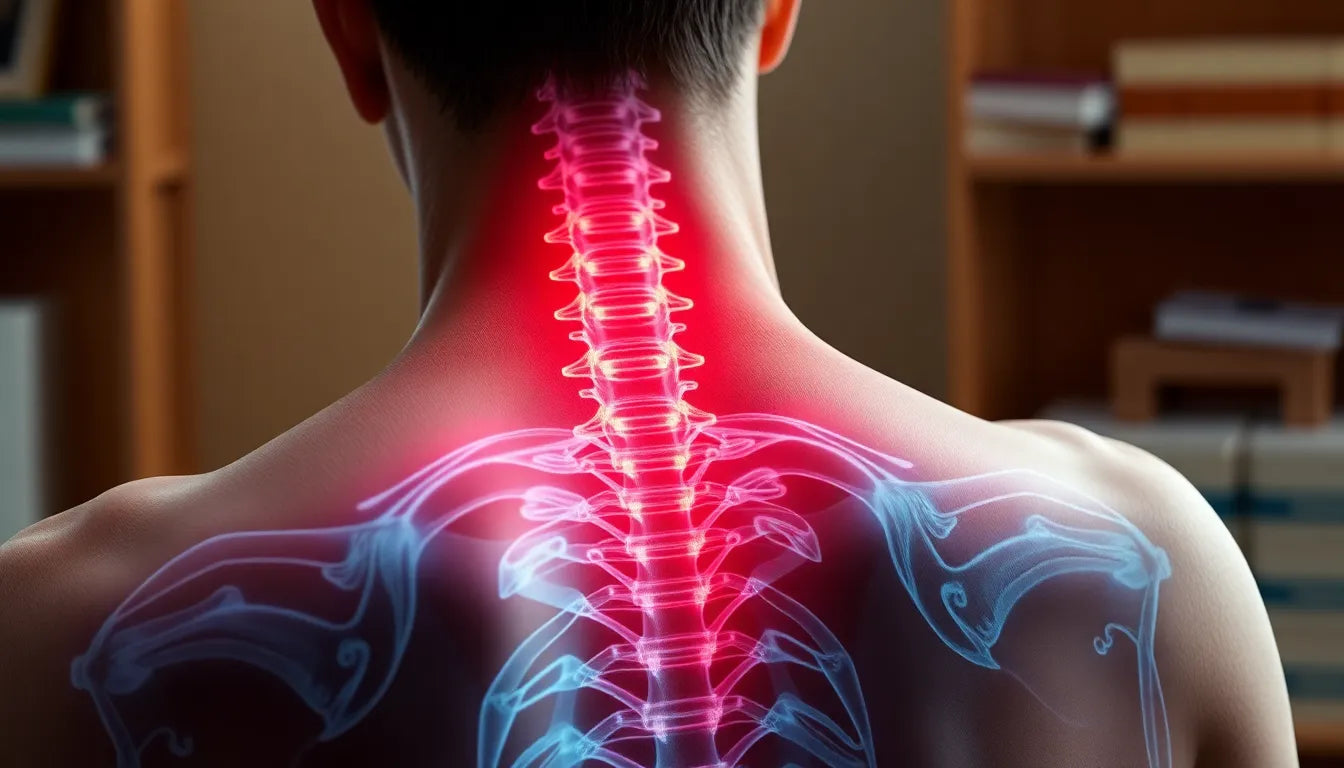In today's fast-paced work environments, where the lines between home and office are increasingly blurred, the concept of work environment ergonomics has never been more critical. Ergonomics, often described as "fitting the job to the worker," is a discipline that aims to optimize human well-being and overall system performance by tailoring workspaces to meet the needs of the individual. This approach not only enhances comfort and productivity but also significantly reduces the risk of work-related injuries and long-term health issues.
Why ergonomics is crucial in modern work environments
As remote work and prolonged desk hours become the norm, the importance of ergonomics in modern work environments has grown exponentially. Employers and employees alike are becoming more aware of the benefits that ergonomic solutions bring to the table. Implementing ergonomic principles can transform a workspace into a hub of efficiency and comfort, reducing the strain on the body and mind.
The growing awareness of ergonomic solutions is reflected in the increasing demand for ergonomic products and services as part of comprehensive workplace wellness programs. These programs are designed not only to boost productivity but also to address and mitigate health risks, particularly musculoskeletal disorders (MSDs), which are among the most common work-related ailments. By investing in ergonomic solutions, businesses can foster a healthier, more engaged workforce.
The promise of a pain-free work environment
Imagine a work environment where pain and discomfort are no longer daily companions. The promise of a pain-free work environment through ergonomics is not just an ideal but a tangible goal that can be achieved with the right strategies and tools. By rethinking and redesigning workspaces, businesses can create environments that not only enhance efficiency but also promote the well-being of their employees.
As we delve deeper into the world of work environment ergonomics, we will explore the myriad benefits and implementation strategies that can transform any workspace into a sanctuary of productivity and comfort. From health benefits to economic advantages, the impact of ergonomics is profound and far-reaching. Stay tuned as we uncover the key elements of ergonomic design and how they can lead to a healthier, more productive workplace.
Benefits of workplace ergonomics
Integrating ergonomic principles into the workplace offers a multitude of health benefits that extend beyond mere comfort. One of the most significant advantages is the reduction in work-related injuries, particularly musculoskeletal disorders (MSDs). These conditions, often caused by repetitive strain and poor posture, can be mitigated through ergonomic interventions, leading to a healthier workforce. Additionally, by promoting better posture and movement, ergonomics can decrease the risk of chronic conditions such as diabetes and obesity, which are often exacerbated by sedentary lifestyles.
Beyond health, the economic advantages of ergonomics are compelling. A study by the Washington State Department of Labor and Industries highlights substantial cost savings, with a 68% reduction in worker's compensation costs, a 39% reduction in cost per claim, and a 43% decrease in labor costs. These savings are complemented by productivity enhancements, as ergonomic improvements can lead to a 25% increase in productivity and a 67% reduction in errors and scrap. These statistics underscore the dual benefit of investing in ergonomics: promoting employee health while boosting the bottom line.
Moreover, the impact of ergonomics on employee engagement and retention cannot be overstated. By fostering a comfortable and supportive work environment, businesses can achieve a 48% reduction in turnover and a 58% reduction in absenteeism. This not only improves morale but also enhances the overall work culture, making it easier to attract and retain top talent.
Implementation guidelines for effective ergonomics
Creating an ergonomic workspace begins with thoughtful workstation design. Adjustable desks, supportive seating, and proper monitor placement are essential components of an ergonomic office. These elements allow employees to customize their workstations to fit their individual needs, reducing strain and promoting comfort. For remote workers, setting up a home office with these ergonomic principles in mind is crucial to overcoming the unique challenges of working from home.
Adhering to guidelines from the Occupational Safety and Health Administration (OSHA) is another critical step in implementing effective ergonomics. OSHA provides comprehensive standards and recommendations to ensure workplaces are designed to minimize risk factors and enhance safety. Regular ergonomic assessments are vital to identifying potential hazards and making necessary adjustments, ensuring that ergonomic practices are consistently maintained.
Industry-specific ergonomic solutions offer tailored strategies that address the unique demands of different sectors. For example, a manufacturing plant may require specialized equipment to reduce repetitive motion injuries, while an office environment might focus on optimizing desk and chair configurations. By customizing ergonomic solutions to fit specific industry needs, businesses can maximize the benefits of their ergonomic investments.
In conclusion, the integration of ergonomics into the workplace is not merely a trend but a necessary evolution in creating healthier, more productive work environments. By understanding and implementing ergonomic principles, companies can significantly enhance employee well-being, reduce costs, and improve overall performance. As we continue to explore the connection between ergonomics and pain management, it becomes clear that a well-designed workspace is a cornerstone of a successful and sustainable business strategy.
Connecting ergonomics to pain management
The link between ergonomics and pain management is both direct and impactful. By implementing ergonomic adjustments, common workplace pain points such as back pain, neck strain, and carpal tunnel syndrome can be significantly alleviated. These adjustments include optimizing chair height, desk setup, and monitor positioning to ensure that the body is supported in a natural and comfortable posture. Ergonomic aids, such as wrist supports and lumbar cushions, play a vital role in maintaining a pain-free work environment, ultimately promoting productivity and employee satisfaction.
Furthermore, the integration of ergonomic solutions into the workplace is a proactive approach to pain prevention. By addressing the root causes of discomfort, businesses can reduce the incidence of work-related injuries and improve overall employee well-being. This approach not only enhances the quality of life for workers but also contributes to a more engaged and efficient workforce.
Cost-benefit analysis tools for ergonomic investments
Investing in ergonomic solutions is not just about immediate comfort; it's also a strategic business decision with measurable returns. Tools and calculators are available to help businesses conduct cost-benefit analyses of their ergonomic investments. These tools allow companies to quantify the long-term savings and health benefits associated with ergonomic interventions, providing a clear picture of the return on investment (ROI).
By using these analytical tools, businesses can make informed decisions about where to allocate resources for maximum impact. The insights gained from these analyses can guide the implementation of ergonomic strategies that not only reduce costs but also enhance employee health and productivity. As such, the adoption of ergonomic solutions is a win-win for both employers and employees, fostering a healthier and more productive work environment.
Frequently Asked Questions
What is the primary goal of workplace ergonomics?
The primary goal of workplace ergonomics is to optimize work environments for better health, comfort, and efficiency. By tailoring workspaces to fit the needs of employees, ergonomics aims to enhance well-being and productivity while minimizing the risk of injuries.
How can ergonomics reduce workplace injuries?
Ergonomics reduces workplace injuries by designing workspaces that minimize strain and repetitive motion injuries. This involves adjusting furniture and equipment to support natural body positions and reduce physical stress.
What are some simple ergonomic changes I can make at my desk?
Simple ergonomic changes include adjusting your chair height so that your feet are flat on the floor, using a footrest if necessary, positioning your monitor at eye level, and ensuring your keyboard and mouse are within easy reach to prevent overextension.
How often should ergonomic assessments be conducted?
Ergonomic assessments should be conducted regularly, at least annually, or whenever there are significant changes in workplace setup or employee roles. These assessments help identify potential hazards and ensure that ergonomic practices are maintained effectively.
Can ergonomics improve mental well-being?
Yes, ergonomics can improve mental well-being by reducing physical discomfort and stress. A comfortable and supportive work environment can lead to better mental health, increased job satisfaction, and overall improved employee morale.


















